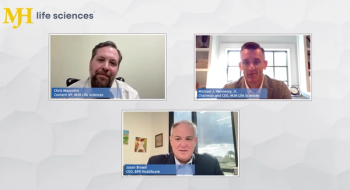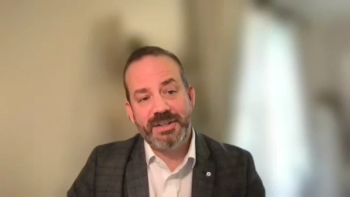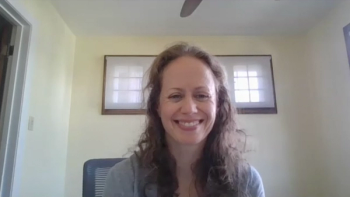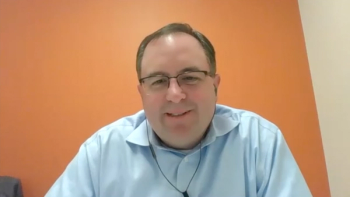
PX: What Does the Hospital of Tomorrow Look Like?
How can we use technology to build the hospital of the future?
How do we build the hospital of tomorrow and what does it look like? How do technology and data play in a role in the hospital of the future? Our expert panel weighs in:
Leveraging Big Data and AI in the Hospital of Tomorrow
A Healthcare Analytics News™ Peer Exchange®
Segment 8/11
Kevin R. Campbell, M.D.: In our next segment, we’re going to talk all about building the hospital of tomorrow. It’s essential that we in healthcare leverage the power of big data and AI to improve care to our patients. One of the ways in which we can best implement these technologies will be through using them in direct patient care. One of the costliest aspects of healthcare today is inpatient care in hospitals — we see these rising costs in both academic and private-practice settings. To that end, let’s now explore how we can utilize these novel technologies to build the hospital of the future. Dr. Albert, I want to start with you: you’ve got all of these technologies, all these innovations; how do we build the hospital of tomorrow? Where is the hospital of tomorrow?
David E. Albert, M.D.: Kevin, my view has always been that instead of building more and more tertiary care temples of medicine, that the hospital of tomorrow will be, in many ways, the home — that we will care for patients utilizing technology and AI — building on knowledge from big data. We will enable those patients to be diagnosed and treated outside of those ivory tower institutions. I think we have to do it if for no other reason than cost.
>>
Kevin R. Campbell, M.D.: I think that’s a great point. How do we preserve the doctor-patient relationship in a setting like that, Geeta?
Geeta Nayyar, M.D., MBA: I think Dave is spot on. The hospital of tomorrow is in the home, and so is the doctor, nurse and patient, whether it’s remote patient monitoring, virtual visits, or the doc actually coming to the household, assessing the home environment and socioeconomic status along with diagnosis and treatment. There’s no doubt that to make the shift to value-based care that more prevention will be needed. Keeping people happy and healthier in the home will be key, and meeting the patients where they’re at, right? When we see the retail-ization of medicine — CVS, Walmart, Costco and Amazon — patients are going where they are going and living in their neighborhood.
Kevin R. Campbell, M.D.: You can have drones delivering your beta blocker from Amazon before this is over.
David E. Albert, M.D.: It’s not just the home, but the workplace as well: you have Apple building clinics and staffing them, as do many large companies, and people love that because it improves their productivity, it decreases their time. It’s just like having daycare centers.
John Nosta, B.A.: Dave, remember Karl Malden and American Express? What did he say? “Don’t leave home without it.” Remember, you always carry your American Express card. Well, for me, here it is; this is my card, I carry it with me everywhere because it becomes part and parcel of care. It goes with the patient. But I want to pose another interesting perspective: let’s destroy the hospital. Instead of trying to say, “Well, the hospital is going to move from a brick and mortar to your house,” let’s look at things like stage-zero disease, restorative and regenerative medicine, stem cells. Think about the opportunity of stopping disease from happening at earlier and earlier and earlier stages.
Kevin R. Campbell, M.D.: I totally agree.
John Nosta, B.A.: So, for me, we look at a hospital now; a hospital is — wait for it — it’s where you go to die. I mean ultimately that’s sad, but in many instances that end-of-life care is defined by a hospital. Walk through the wards and you see a lot of sick, old patients there. So that I think is intrinsically a problem in healthcare; for me, I think that we can change that dynamic. We can address disease at again that proverbial stage-zero: how can we find cancer at the earliest stage? How can we find an MI [myocardial infarction] at the point where maybe we’re looking at thromboxane, free-circulating thromboxane prior to the actual platelet plug? Who knows what the mechanism is, but I think that’s going to be interesting because technology will change the need for the hospital in the first place.
Kevin R. Campbell, M.D.: I certainly agree with those points because I think we have to shift the focus on healthcare in the United States from treatment to prevention. If we can use predictive analytics and tools like this with AI in our pocket and AI leading the charge, I think that we will be able to prevent a lot of disease. We certainly can prevent the complication of diabetes; we can prevent multiple strokes; we can prevent multiple MIs; we can prevent a lot of this just by knowing early, and that’s, again, the dichotomy of big data. We use all these big data sets and the analytics and then we personalize that care based on your DNA.
David E. Albert, M.D.: I will say one thing. We’re all optimists here. And you know when you’re a kid and you say, “Mommy, can I go out to play,” and your mommy goes, “No honey, it’s may I go out to play.” The problem is we’re back to the patient. I don’t have to be compliant. In fact, many times I don’t want to eat those vegetables and I can be an adult and say that I’m not just a kid. I happen to like vegetables, but the point is, we are going to have to have something that today we don’t have much of — personalized coaching and motivation. We sit there and I write a prescription — now an e-prescription — for you for atenolol, or for Entresto, but if you don’t take it, it’s not doing any good.
Kevin R. Campbell, M.D.: And if you can’t afford it, and if you can’t get it, you can’t have access to it.
David E. Albert, M.D.: Exactly. And so best intentions do not always equal best results.
Kevin R. Campbell, M.D.: Our healthcare system does not have any individual accountability placed on the patient; the patient is part of the team. There’s doctors, patients, nurses and healthcare systems, but the patient needs to be held accountable in some way, otherwise we don’t get anywhere.
Geeta Nayyar, M.D., MBA: Sure, no doubt about it, but with the rise of high deductible plans, patients are now accountable because it’s affecting their pocket, right? I completely agree with you, Dave. It’s about lifestyle choices; coaching and lifestyle choices. It’s also about embracing technology, particularly in the youth of today when we look at childhood obesity. For the first time, we have a generation that may not outlive their parents — that is a travesty, right? People are not going outside to play, whereas we did. Now you’re doing something on the computer. Do we need to start looking at gamification and AI, and ways to keep a different generation engaged and physical and prevent?
Kevin R. Campbell, M.D.: Think about the suicide rates in our youth today because they’re sitting in a room engaged —
Geeta Nayyar, M.D., MBA: They’re lonely.
Kevin R. Campbell, M.D.: On a game: they’re lonely, they have no human interaction, they’re overweight, and it just spirals.
David E. Albert, M.D.: They’re being cyber bullied.
>>
Kevin R. Campbell, M.D.: There’s got to be a way that we can intervene there.
John Nosta, B.A.: I think two points: one is that I’m not convinced that the solution is in nudge psychology and making people eat their green leafy vegetables; I don’t think that the pivotal change in care will come that way. I think it will be technology mediated through extraordinarily sophisticated diagnostic modalities that see things happening earlier and earlier and earlier.
David E. Albert, M.D.: You may see it happening, but then you have to do something about it.
Kevin R. Campbell, M.D.: The patient still has to do something about it.
John Nosta, B.A.: Let me get to my second point: the interesting thing — and when we talk about just traditional technology today — we live in the world of the activity tracker, of the proverbial 10,000 steps. Now, the only person who really is interested in that is the guy at the gym who’s looking to woo a mate, right? That’s an athletic option. We need to move it from an athletic option to a clinical imperative, mediated by data, clinical trials and validation, exactly what you’re doing with AliveCor. But the point is, if I can tell a 38-year-old woman whose status is post-mastectomy for cancer, that if she wears this tracker and it’s going to tell me if the cancer comes back really, really soon, will she wear it, or will it become a dust collector like so many of these other trackers? We’re changing it from an option to an imperative, and I think that’s a data dynamic, and we’re going to see that sooner than later.
Get the best executive insights directly to your inbox. Sign up for our
Related






































